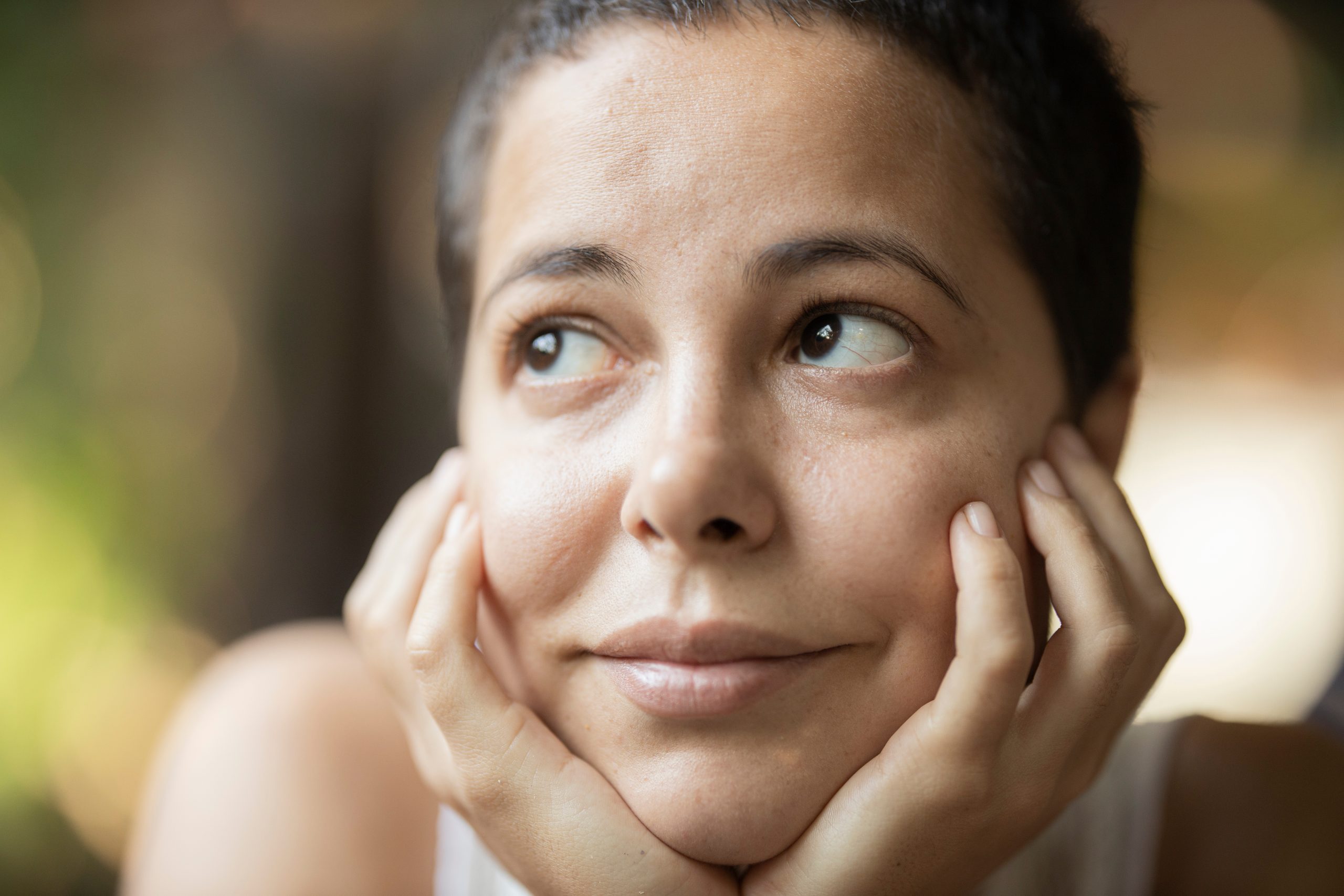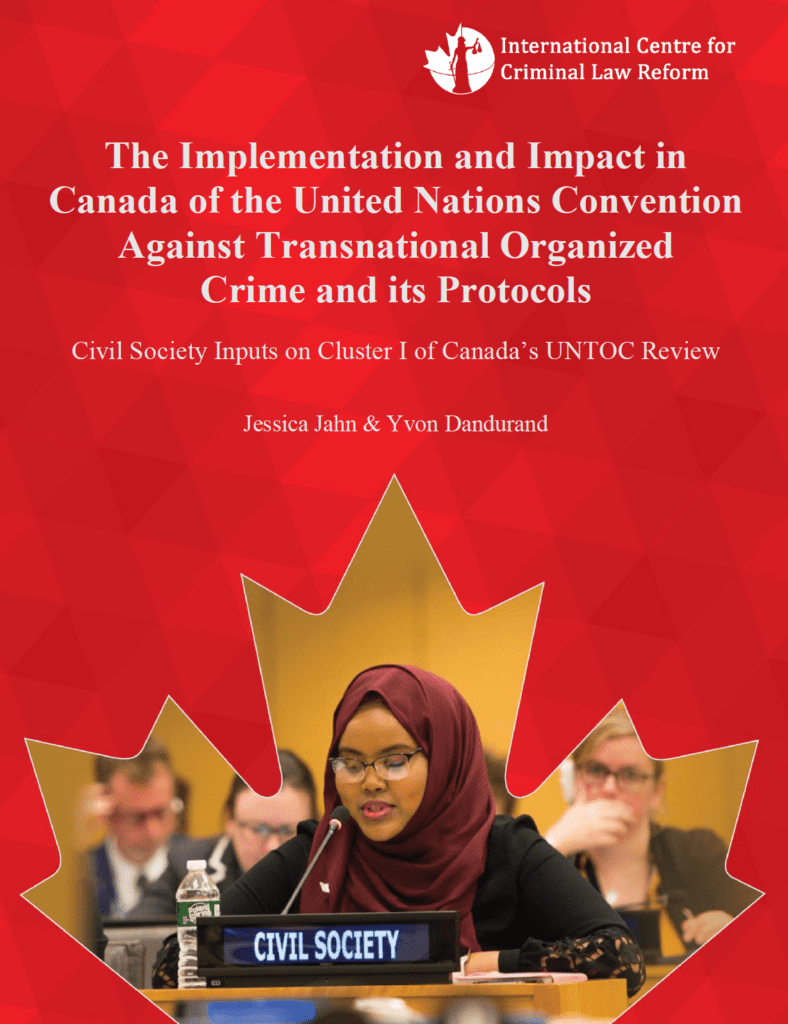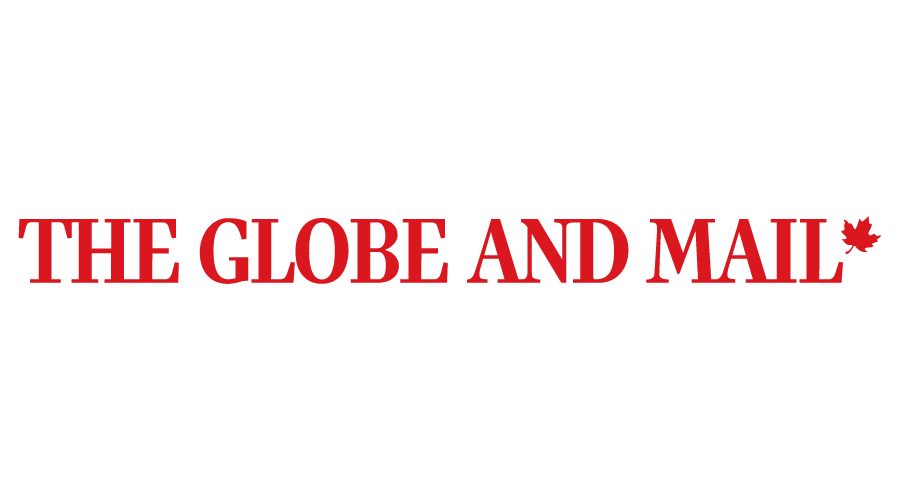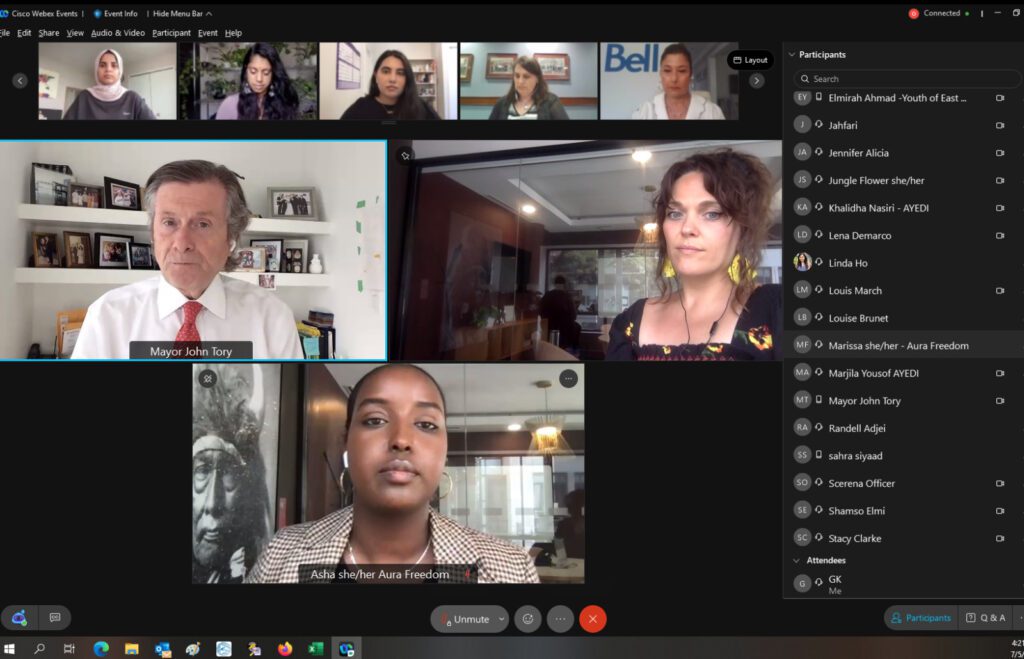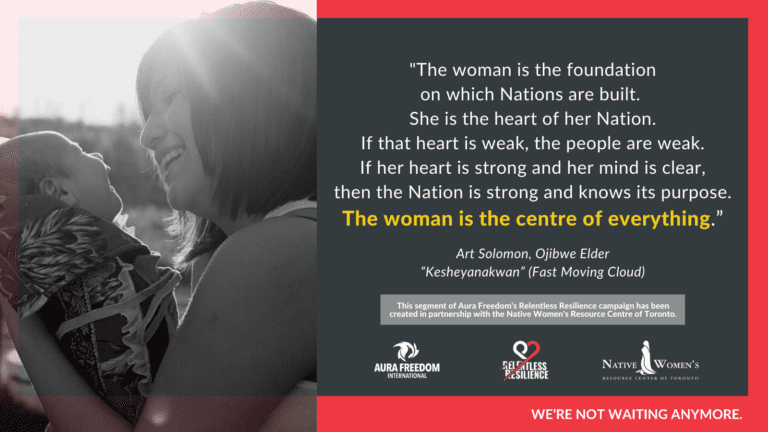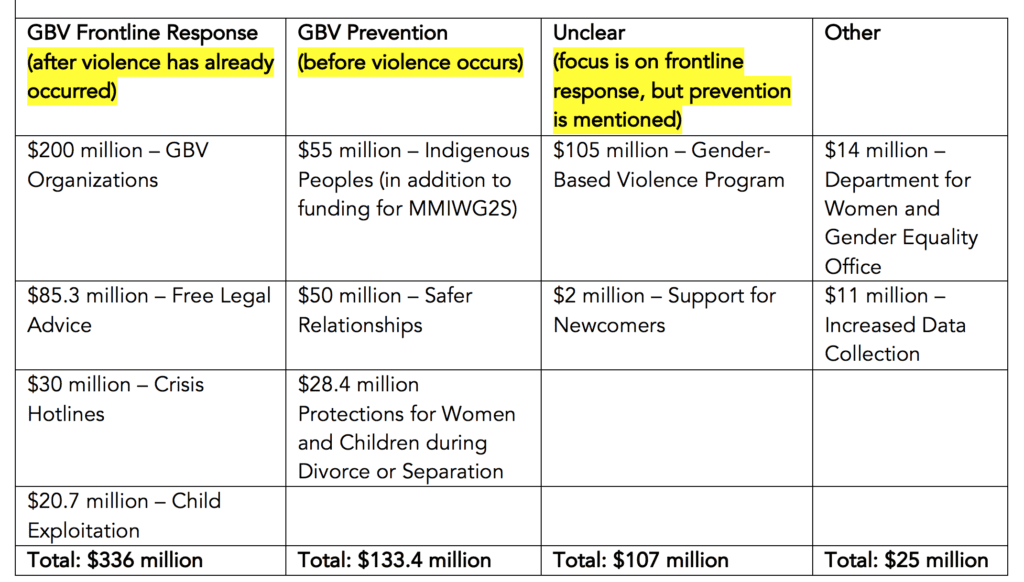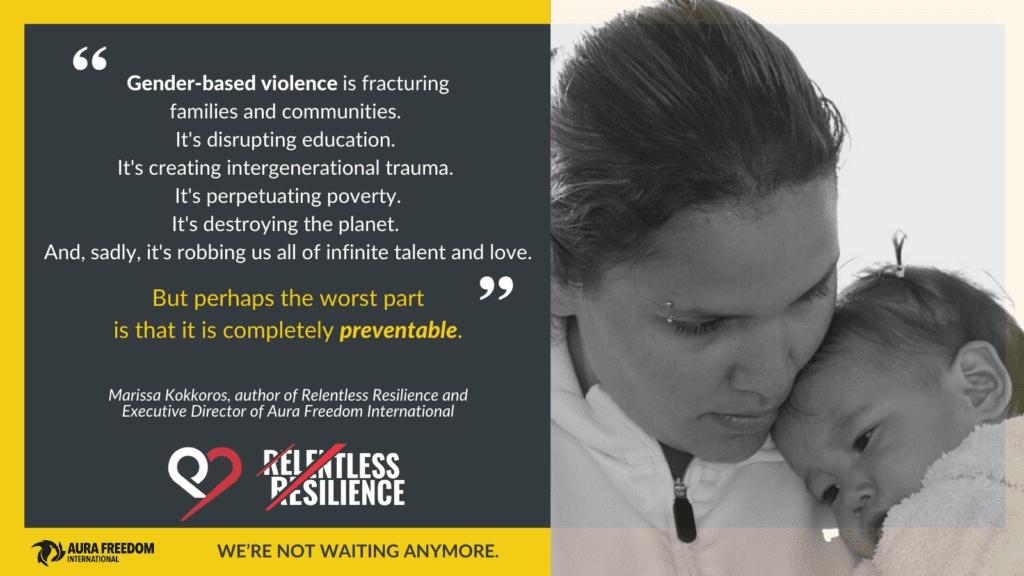Our Analysis of Budget 2022
On Thursday, April 7th, Finance Minister Chrystia Freeland tabled her second federal budget for Canada to move ‘beyond the pandemic’.
While we recognize there have been large investments allocated towards housing, and further investments in the childcare sector, we argue that the government has failed to recognize how the effects of the pandemic will continue to be felt by many working class women, racialized and Indigenous women, LGBTQ2S+ caregivers, newcomers, women with disabilities, migrant workers, and more.
Although Budget 2022 has been touted as a feminist one, gender equality did not seem to be a priority this year. Indeed, the Statement and Impacts Report on Gender, Diversity, and Quality of Life is separated from the budget, as opposed to being embedded in it.
The following is Aura Freedom’s analysis of Budget 2022-2023, through the lenses of gender-based violence eradication, equity, human rights and intersectional feminism.
The National Action Plan to End Gender-Based Violence (NAP)
The release of Budget 2021 was a victorious day for feminists and advocates working to end gender-based violence in Canada. After decades of advocacy, we finally had our moment with an announcement of over $600 million to finally implement a National Action Plan to End Gender-Based Violence.
Many of us were looking forward to hearing more in Budget 2022, but were met with vague language on the “forthcoming National Action Plan to End Gender-Based Violence”. The complete lack of information in this short section is deeply concerning for the GBV sector.
Budget 2022 proposes $539.3 million over five years “to enable provinces and territories to supplement and enhance services and supports within their jurisdictions to prevent gender-based violence and support survivors.” This does not seem like a coordinated, national plan. What does it all mean? Moreover, most of the money is forecasted in 2024-2027, which poses the question of how we are to get this long overdue and urgent NAP off the ground.
Gender-based violence does not just “go away”. As a deeply rooted societal issue, it will take years – if not generations – to eradicate it. Thus, it must be addressed consistently and in every fiscal budget, not just once.
In a world that has collectively mobilized to respond to COVID-19, from finding a vaccine to a multibillion-dollar plan to build the economy in five years, the question still remains: can we not mobilize in the same way for a pandemic that has affected the lives of millions of women and girls for centuries?
We believe that we can. With sustainable funding that places trust in grassroots organizations, and a strong political will, we can eradicate gender-based violence for good.
It just has to mean enough to us.
We will be monitoring this issue closely in the coming months and look forward to hearing more on the roll-out of the National Action Plan to End Gender-Based Violence, including Missing and Murdered Indigenous Women, Girls and Gender diverse peoples.
Indigenous Peoples and Reconciliation
$11 billion will be invested over six years in recognition of past harm and discrimination towards Indigenous children and families, to support Indigenous communities and advance self-determination. This is a significant reduction from the $40 billion announced in 2021 and much less than the amounts called for by Indigenous leaders and organizations.
The recognition of the intergenerational impact of the residential school and child welfare services on Indigenous communities, and the prioritization of the safety and health of Indigenous children are two essential steps towards Reconciliation and towards reproductive justice for Indigenous women.
Missing from the budget, however, was any mention of the National Inquiry into Missing and Murdered Indigenous Women and Girls’ Calls to Justice – and no new investments to implement those calls. We recognize that in 2021, $2.2 billion was announced over five years to respond to MMIWG2S, but there has been no further allocation of funding to get the work off the ground. In fact, “missing and murdered Indigenous women” was mentioned 16 times in Budget 2021, but only once in Budget 2022.
Genocide cannot be undone in one budget year.
The lack of prioritization of responding to the genocide of Missing and Murdered Indigenous women, girls and Two-Spirit peoples is simply not good enough. We implore a sustained commitment to addressing the root causes of violence towards Indigenous women and girls, and new investments in preventative programs to address this violence and empower survivors.
Also noted in this section of Budget 2022 is the lack of distinction between Indigenous groups and the diverse needs of First Nations, Métis and Inuit peoples. Funding to address the criminalization of Indigenous land defenders was also missing, which is directly related to the ongoing discrimination and displacement of Indigenous peoples in Canada.
Human Trafficking
There is not one mention of human trafficking in the entirety of Budget 2022, yet those of us working in this space know there has been a sharp increase in online youth exploitation and increased exploitation of migrant workers during the pandemic. This indifference to one of the worst human rights abuses of our time is infuriating and unacceptable.
Sexual Violence and Misconduct in the Military
In December of 2021, a public, formal apology was issued towards all Defence Team members and veterans that were victims of, or affected by sexual assault, harassment, or discrimination based on sex, gender, or sexual orientation.
This apology was a big step forward, recognizing the responsibility of the Canadian military to protect its service members, and acknowledging its long history of silencing victims of sexual violence and not bringing perpetrators to justice.
To address this, Budget 2022 will invest $100.5 million over six years to address sexual violence within the Canadian Military. Since the language is vague on how the monies will be employed, we suggest a strong focus on the prevention of sexual violence, rather than the response to the violence after it has already occurred. This means investments in addressing the deeply rooted patriarchal beliefs and culture of the military, as well as training for leadership.
Housing
Budget 2022 presented significant investments in housing, responding to a long-standing housing crisis and rising levels of homelessness. Housing is a key social determinant of health, safety and wellbeing – and a human right.
While the report announced many exciting investments with regards to housing, there was no explicit mention of how these investments will immediately address housing insecurity and homelessness, especially for women – who have a higher incidence of core-housing needs, especially when they belong to marginalized communities, are a lone-parent, have a disability, or when they experience violence. We know that many women must choose between living in a violent home or facing homelessness. In the same way, we know that women who experience homelessness face much higher rates of violence and are extremely vulnerable to trafficking. Canada must address the housing crisis with a gendered and human rights lens to respond to the unique issues faced by women experiencing housing insecurity.
Housing supply is mentioned frequently in the budget, with claims that “Increasing our housing supply will be key to making housing more affordable for everyone.” However, supply alone will not end the housing crisis. Even with more supply, too many people living in Canada will still not be able to afford homes, including women, single parents, migrant workers, refugees, and those living in poverty. Livable incomes and wages are the biggest factor to housing stability and seem to be missing from the housing equation.
Delivering on Child Care
Budget 2021 made an historic investment of $30 billion over five years to build a high-quality, affordable and accessible early learning and child care system across Canada. In less than a year, the federal government reached agreements with all 13 provinces and territories, meaning that by 2025-26, it will mean an average child care fee of $10-a-day for all regulated child care spaces across Canada.
This investment will save lives – literally. It is well-documented that many women must choose between leaving an abusive relationship or living in poverty. Our own community research has shown that many survivors stay in violent homes because they cannot afford daycare on their own. Read more here.
Women are, for the most part, the primary caregivers of children in their families. Therefore, child care costs are also a major barrier to economic empowerment for the most marginalized women in Canada, including single mothers, immigrant and refugee women, Indigenous and racialized women.
Budget 2022 will provide an additional $625 million over four years, beginning in 2023-24, for an Early Learning and Child Care Infrastructure Fund. We are worried that this current funding, however, is inefficient to support the expansion needed (workforce, facilities, training, etc.) to make the child care dream a reality. We will be monitoring this situation closely in the coming months.
Anti-Racism and Combatting Hate
Anti-Racism Strategy and National Action Plan on Combatting Hate
$85 million over 4 years has been allocated to launch an Anti-Racism Strategy and National Action Plan on Combatting Hate is a positive step, however advocates have consistently said that more is needed to address the deeply embedded racism in Canada’s systems and the rising rates of hatred we are all bearing witness to in our communities.
Important to note here is that misogyny is also a form of hate, and must be addressed in order to prevent brutal gendered attacks like the Montreal Massacre, the Toronto Van Attack, the Nova Scotia Mass Shooting and Canada’s rising rates of femicide and filicide.
Funding for Black Researchers
Budget 2022 promises $40.0 million over five years and $9.7 million to the federal granting councils to support targeted scholarships and fellowships for promising Black student researchers. This funding is critical to support Black researchers and developing research on marginalized Black communities. It is important for the federal granting council to not only consist of diverse members who represent various backgrounds, but that the recipients are diverse as well. This will ensure research is created that is diverse, intersectional, and reflects the lived realities of Canadians.
Women at Work
Sick Days
Missing from the Budget 2022 was any mention of paid sick days, and how the lack of them particularly affects women who make up the majority of the work force in the childcare sector, long-term care sector, and most other caring professions.
Union Training and Innovation Program
Budget 2022 proposes $84.2 million over four years to support 3,500 apprentices per year from underrepresented communities (women, newcomers, persons with disabilities, Indigenous peoples, and racialized Canadians) to access good-quality and high-paying jobs in the trade industry through the Union Training and Innovation Program. This is a great initiative that can lead to women’s economic development, and we look forward to the relevant communities being easily able to access the program.
Menstrual Equity Fund
Budget 2022 proposes to provide $25 million over two years, starting in 2022-23, for Women and Gender Equality Canada to establish a national pilot project for a Menstrual Equity Fund that will help make menstrual products available to those in need.
Over two years, Women and Gender Equality Canada will be provided $25 million to establish and pilot a Menstrual Equity Fund that will provide menstrual products to marginalized women, girls and gender diverse peoples. This project is critical in eliminating barriers to education and participation for women and girls. We look forward to the project roll-out and learning of the ways these investments will be accessible to all marginalized people who are not adequately supported by the healthcare system.
Addressing Mis/Disinformation
Budget 2022 has allocated an investment of $10 million over five years to combat disinformation in order to protect Canada’s democracy. We recognize the immense potential of mis- and disinformation for real-life harmful effects, especially on frequently targeted populations such as BIPOC, LGBTQ2S+, and religious minority communities, and applaud this investment.
Budget 2022 acknowledges that there has been a rise in anti-democratic ideology in concurrence with a rise in misinformation, the COVID-19 pandemic, and increasing geopolitical tensions. However, the budget fails to acknowledge how anti-democratic ideology is directly connected to misogyny and other anti-gender equality ideology – and the proof of this is right next door. We are disappointed that the Budget did not acknowledge the ongoing movement to restrict reproductive rights and freedoms in the USA, nor propose action to combat similar misinformation campaigns about reproductive rights in Canada.
Supporting Charities
Budget 2022 greatly lacks sustainable investments to support the charity sector. While the funding for the Performance Art and Heritage sector is welcomed, there is no mention of the need to provide the charitable sector with sustained, core funding to do their important work.
In short, project funding is destroying the charitable sector. Organizations must spend the bulk of their time writing project grants, and then reporting back on those grants in tedious ways that kill us softly. Moreover, project funding forces organizations to carry out their projects in siloed ways and limits the possibilities of salary increases for our overworked and underpaid staff members. We strongly advocate for sustained, core funding for the charitable sector, as well as simplified grant applications and reporting requirements that do not drain smaller, grassroots organizations of their time and resources.
After all, it is the charitable sector doing the work of lifting up communities and supporting marginalized people to participate in the economy, and we deserve to be treated with dignity and respect.
International: Responding to the War in Ukraine
Budget 2022 proposes to invest $111 million over five years to implement two new immigration streams for Ukrainians fleeing Russia’s invasion.
While we commend Canada’s commitment to supporting Ukraine during the Russian invasion, we were concerned at the lack of attention paid to Ukrainian women, girls and gender diverse people, and the issue of wartime sexual violence. Indeed, while the Statement and Impacts Report on Gender, Diversity, and Quality of Life for the 2022 Budget states that more women will benefit from the new immigration streams, there is an urgent need for funding for local organizations in Ukraine to address sexual violence and support survivors.
Conclusion
Overall, while positive investments have been made, Budget 2022 lacked a human rights-based approach and a gender-informed, intersectional framework. Small ‘bits and bobs’ in the budget simply will not amount to the systemic change that is needed to eradicate gender-based violence and lift marginalized communities out of poverty.
For women in Canada who experience gender-based violence in their homes, every day is an emergency. Every day is life or death. For these women and their children, COVID-19 presented complex risks that went beyond the virus itself, and continues to affect their daily lives. These are the women who were not represented in Budget 2022.



